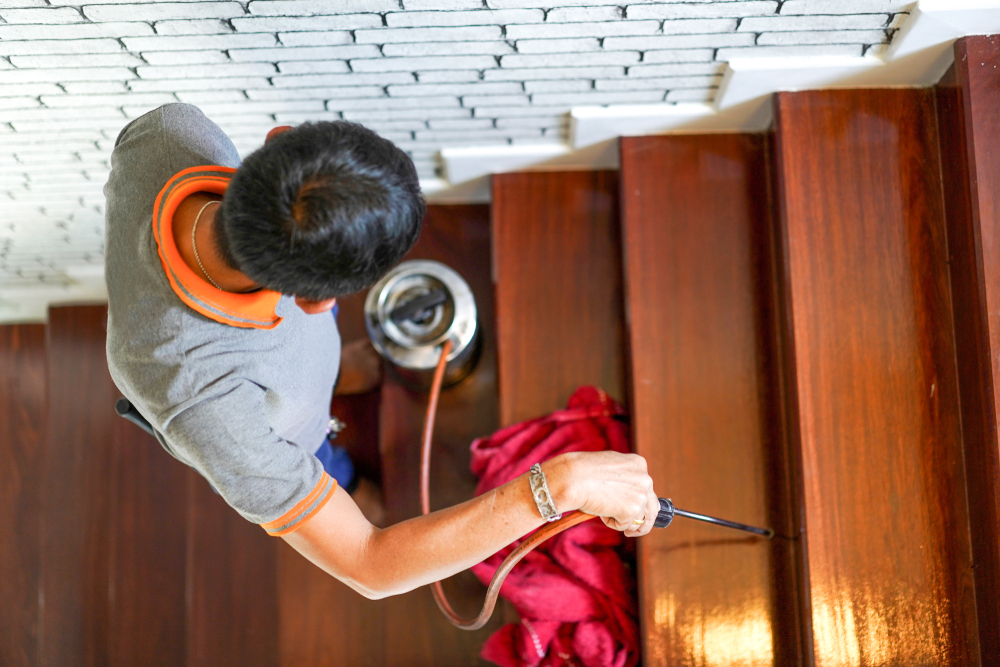Understanding Paint Strippers
Paint strippers are products designed to remove paint, finishes, and coatings while cleaning the underlying surfaces. They come in various forms, including liquids, gels, pastes, and sprays. The type of paint stripper you choose depends on the surface you are working with. For wood, you’ll need a stripper that is gentle enough not to damage the natural grain.
Types of Paint Strippers
There are three main types of paint strippers: solvent-based, caustic, and biochemical. Each has unique properties suited to different tasks. Solvent-based strippers work by breaking down the bond between the paint and the wood. They are fast-acting but can be harsh. Caustic strippers use lye as the primary ingredient. They are effective but need neutralizing to stop the chemical reaction. Biochemical strippers, derived from natural sources, offer a safer alternative and are environmentally friendly.
Solvent-Based Paint Strippers
Solvent-based strippers are powerful. They dissolve the paint, allowing it to be scraped away. These strippers often contain methylene chloride, which is effective but requires proper ventilation. Safety gear, like masks and gloves, is a must to avoid inhaling fumes or skin contact. They are suitable for many layers of paint but can be too aggressive for delicate wood.
Caustic Paint Strippers
Caustic strippers are most effective on oil-based paints. They are less volatile than solvent-based strippers but still require careful handling. These products are typically in paste form, which is applied thickly to surfaces. The stripper needs sufficient time to react before removal. Once the process is complete, washing the wood with water and vinegar neutralizes the alkaline residue. Caustic strippers can darken wood, so testing on a small area first is wise.
Biochemical Paint Strippers
These strippers are made from plant-based compounds. They provide a non-toxic option with fewer fumes. Although slower to act, they are safer on skin and environmentally friendly. Biochemical strippers are often marketed as ‘green’ products. They are effective on a range of paints and varnishes, though multiple applications may be needed for thicker layers.
Choosing the Right Stripper for Wood
- Test a Sample Area: Always test your chosen stripper on a small, inconspicuous part of the wood. This practice ensures it won’t discolor or damage the surface.
- Consider the Type of Coating: Determine if the paint is water-based, oil-based, or a varnish. Some strippers are better suited for specific types.
- Look for Gentle Formulations: Wood is sensitive. Opt for products that won’t dry out or warp the grain.
- Check Drying Times: Some strippers require longer drying periods. Consider your project timeline when selecting a product.
Popular Paint Strippers
Citristrip Paint and Varnish Stripping Gel
Citristrip is a popular choice for wood. It’s a biochemical stripper known for its pleasant citrus scent. This gel is thick and stays active for up to 24 hours, making it effective for larger projects. Users appreciate the easy application and gentle action on wood.
3M Safest Stripper
The 3M Safest Stripper is non-toxic and works without harsh odors. This stripper caters to those seeking an environmentally responsible product. It handles various layers of paint but may require longer dwell times on multiple coatings. It is especially user-friendly in closed spaces due to its low fume release.
Smart Strip by Dumond
Smart Strip is another eco-friendly option. It’s a water-based product effective on multiple coatings. Applicators like it for projects involving intricate details, as it spreads easily without dripping. Smart Strip is often chosen for historic restorations due to its non-damaging formula.
Peel Away 1 Paint Remover
Peel Away 1 has a high success rate with heavy-anodized coatings. It comes with a unique system involving a paste cover and a laminated cloth. This method keeps the stripper from drying out while working. Peel Away 1 is effective but more complex to use than other options.
Application and Removal
Proper application of paint stripper is crucial. Safety is a priority. Use a quality brush or roller to spread the stripper evenly. Protect surrounding areas with plastic and ensure adequate ventilation. Allow the stripper to dwell according to product instructions.
Once ready, use a scraper or steel wool to remove the paint. For intricate areas, a toothbrush or small brush is useful. Always scrape in the direction of the wood grain. Avoid scratching to maintain the surface integrity.
Post-Stripping Surface Care
After removing the paint, neutralize the stripper if specified. Wash the wood with soapy water and a sponge. Rinse thoroughly, then let it dry completely. Sanding the wood smooths any rough areas left. Prepare the surface for new finishes by cleaning with a tack cloth.
Maintaining Wood Post-Strip
Caring for wood post-strip extends its life. Use a high-quality sealant or stain to protect against moisture and UV light. Regular dusting and cleaning maintain the surface. Avoid harsh chemicals that could eat away at new finishes. Regular checks for signs of wear allow for timely maintenance.
Safety Tips
- Use Protective Gear: Wear gloves, goggles, and a mask when working with paint strippers.
- Ensure Ventilation: Work in a well-ventilated area to avoid exposure to fumes.
- Avoid Direct Skin Contact: Many strippers contain strong chemicals that can irritate or burn skin.
- Dispose of Waste Properly: Follow local guidelines for disposing of chemical waste and stripped paint residues.




Subscribe for Updates
Get the latest articles delivered to your inbox.
We respect your privacy. Unsubscribe anytime.